 We have examined inflation in several blogs in recent months. With inflation at levels not seen for 40 years, this is hardly surprising. One question we’ve examined is whether the policy response has been correct. For example, in July, we asked whether the Bank of England had raised interest rates too much, too late. In judging policy, one useful distinction is between demand-pull inflation and cost-push inflation. Do they require the same policy response? Is raising interest rates to get inflation down to the target rate equally applicable to inflation caused by excessive demand and inflation caused by rising costs, where those rising costs are not caused by rising demand?
We have examined inflation in several blogs in recent months. With inflation at levels not seen for 40 years, this is hardly surprising. One question we’ve examined is whether the policy response has been correct. For example, in July, we asked whether the Bank of England had raised interest rates too much, too late. In judging policy, one useful distinction is between demand-pull inflation and cost-push inflation. Do they require the same policy response? Is raising interest rates to get inflation down to the target rate equally applicable to inflation caused by excessive demand and inflation caused by rising costs, where those rising costs are not caused by rising demand?
In terms of aggregate demand and supply, demand-pull inflation is shown by continuing rightward shifts in aggregate demand (AD); cost-push inflation is shown by continuing leftward/upward shifts in short-run aggregate supply (SRAS). This is illustrated in the following diagram, which shows a single shift in aggregate demand or short-run aggregate supply. For inflation to continue, rather than being a single rise in prices, the curves must continue to shift.
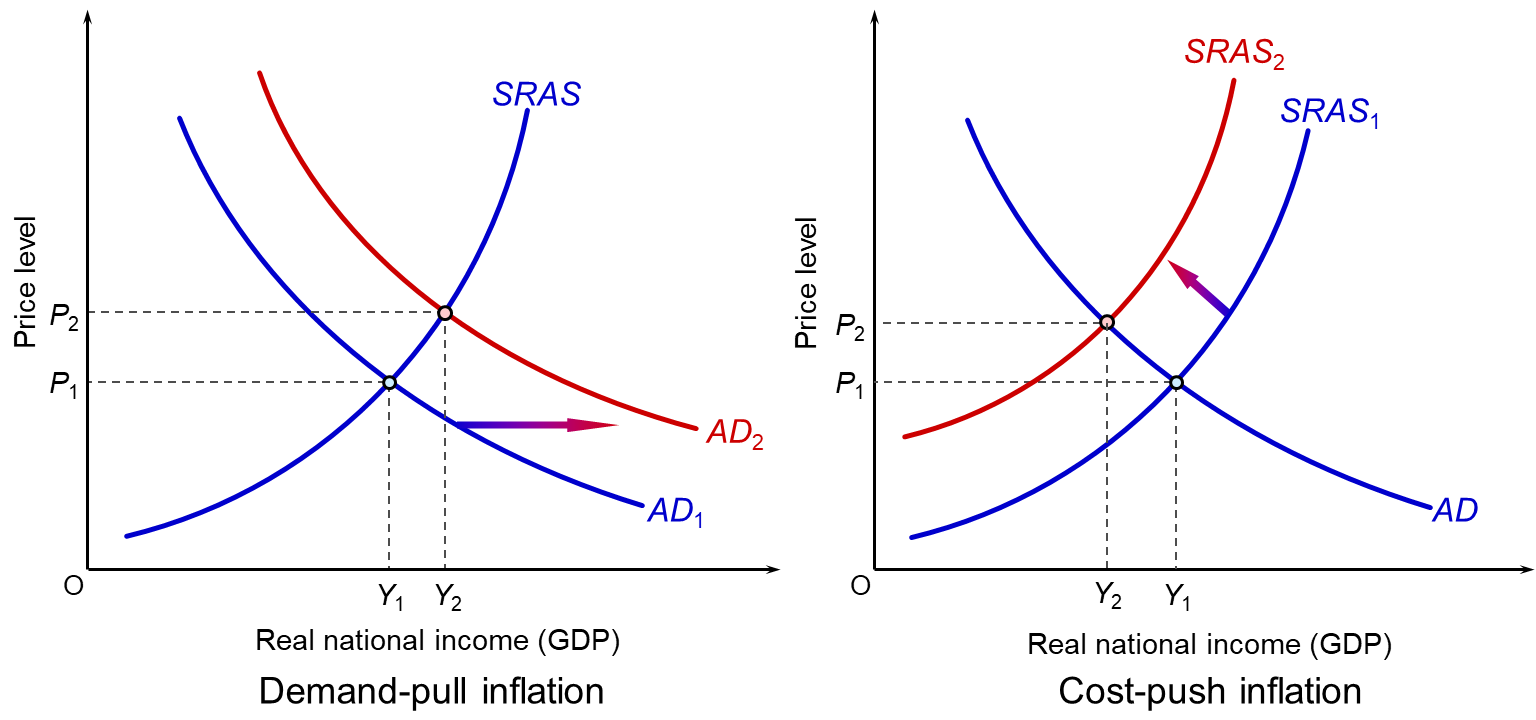
As you can see, the effects on real GDP (Y) are quite different. A rise in aggregate demand will tend to increase GDP (as long as capacity constraints allow). A rise in costs, and hence an upward shift in short-run aggregate supply, will lead to a fall in GDP as firms cut output in the face of rising costs and as consumers consume less as the cost of living rises.
The inflation experienced by the UK and other countries in recent months has been largely of the cost-push variety. Causes include: supply-chain bottlenecks as economies opened up after COVID-19; the war in Ukraine and its effects on oil and gas supplies and various grains; and avian flu and poor harvests from droughts and floods associated with global warming resulting in a fall in food supplies. These all led to a rise in prices. In the UK’s case, this was compounded by Brexit, which added to firms’ administrative costs and, according to the Bank of England, was estimated to cause a long-term fall in productivity of around 3 to 4 per cent.
The rise in costs had the effect of shifting short-run aggregate supply upwards to the left. As well as leading to a rise in prices and a cost-of-living squeeze, the rising costs dampened expenditure.
This was compounded by a tightening of fiscal policy as governments attempted to tackle public-sector deficits and debt, which had soared with the support measures during the pandemic. It was also compounded by rising interest rates as central banks attempted to bring inflation back to target.
Monetary policy response
 Central banks are generally charged with keeping inflation in the medium term at a target rate set by the government or the central bank itself. For most developed countries, this is 2% (see table in the blog, Should central bank targets be changed?). So is raising interest rates the correct policy response to cost-push inflation?
Central banks are generally charged with keeping inflation in the medium term at a target rate set by the government or the central bank itself. For most developed countries, this is 2% (see table in the blog, Should central bank targets be changed?). So is raising interest rates the correct policy response to cost-push inflation?
One argument is that monetary policy is inappropriate in the face of supply shocks. The supply shocks themselves have the effect of dampening demand. Raising interest rates will compound this effect, resulting in lower growth or even a recession. If the supply shocks are temporary, such as supply-chain disruptions caused by lockdowns during the pandemic, then it might be better to ride out the problem and not raise interest rates or raise them by only a small amount. Already cost pressures are easing in some areas as supplies have risen.
If, however, the fall in aggregate supply is more persistent, such as from climate-related declines in harvests or the Ukraine war dragging on, or new disruptions to supply associated with the Israel–Gaza war, or, in the UK’s case, with Brexit, then real aggregate demand may need to be reduced in order to match the lower aggregate supply. Or, at the very least, the growth in aggregate demand may need to be slowed to match the slower growth in aggregate supply.
Huw Pill, the Chief Economist at the Bank of England, in a podcast from the Columbia Law School (see links below), argued that people should recognise that the rise in costs has made them poorer. If they respond to the rising costs by seeking higher wages, or in the case of businesses, by putting up prices, this will simply stoke inflation. In these circumstances, raising interest rates to cool aggregate demand may reduce people’s ability to gain higher wages or put up prices.
 Another argument for raising interest rates in the face of cost-push inflation is when those cost increases are felt more than in other countries. The USA has suffered less from cost pressures than the UK. On the other hand, its growth rate is higher, suggesting that its inflation, albeit lower than in the UK, is more of the demand-pull variety. Despite its inflation rate being lower than in the UK, the problem of excess demand has led the Fed to adopt an aggressive interest rate policy. Its target rate is 5.25% to 5.50%, while the Bank of England’s is 5.25%. In order to prevent short-term capital outflows and a resulting depreciation in the pound, further stoking inflation, the Bank of England has been under pressure to mirror interest rate rises in the USA, the eurozone and elsewhere.
Another argument for raising interest rates in the face of cost-push inflation is when those cost increases are felt more than in other countries. The USA has suffered less from cost pressures than the UK. On the other hand, its growth rate is higher, suggesting that its inflation, albeit lower than in the UK, is more of the demand-pull variety. Despite its inflation rate being lower than in the UK, the problem of excess demand has led the Fed to adopt an aggressive interest rate policy. Its target rate is 5.25% to 5.50%, while the Bank of England’s is 5.25%. In order to prevent short-term capital outflows and a resulting depreciation in the pound, further stoking inflation, the Bank of England has been under pressure to mirror interest rate rises in the USA, the eurozone and elsewhere.
Articles
Blogs on this site
Information and data
Questions
- How may monetary policy affect inflationary expectations?
- If cost-push inflation makes people generally poorer, what role does the government have in making the distribution of a cut in real income a fair one?
- In the context of cost-push inflation, how might the authorities prevent a wage–price spiral?
- With reference to the second article above, explain the ‘monetary policy conundrum’ faced by the Bank of Japan.
- If central banks have a single policy instrument, namely changes in interest rates, how may conflicts arise when there is more than one macroeconomic objective?
- Is Russia’s rise in inflation the result of cost or demand pressures, or a mixture of the two (see articles above)?
 The distinction between nominal and real values in one of the ‘threshold concepts’ in economics. These are concepts that are fundamental to a discipline and which occur again and again. The distinction between nominal and real values is particularly important when interpreting and analysing data. We show its importance here when analysing the latest retail sales data from the Office for National Statistics.
The distinction between nominal and real values in one of the ‘threshold concepts’ in economics. These are concepts that are fundamental to a discipline and which occur again and again. The distinction between nominal and real values is particularly important when interpreting and analysing data. We show its importance here when analysing the latest retail sales data from the Office for National Statistics.
Retail sales relate to spending on items such as food, clothing, footwear, and household goods (see). They involve sales by retailers directly to end consumers whether in store or online. The retail sales index for Great Britain is based on a monthly survey of around 5000 retailers across England, Scotland and Wales and is thought to capture around 75 per cent of turnover in the sector.
Estimates of retail sales are published in index form. There are two indices published by the ONS: a value and volume measure. The value index reflects the total turnover of business, while the volume index adjusts the value index for price changes. Hence, the value estimates are nominal, while the volume estimates are real. The key point here is that the nominal estimates reflect both price and volume changes, whereas the real estimates adjust for price movements to capture only volume changes.
The headline ONS figures for September 2023 showed a 0.9 per cent volume fall in the volume of retail sales, following a 0.4 per cent rise in August. In value terms, September saw a 0.2 per cent fall in retail sales following a 0.9 per cent rise in August. Monthly changes can be quite volatile, even after seasonal adjustment, and sensitive to peculiar factors. For example, the unusually warm weather this September helped to depress expenditure on clothes. It is, therefore, sensible to take a longer-term view when looking for clearer patterns in spending behaviour.
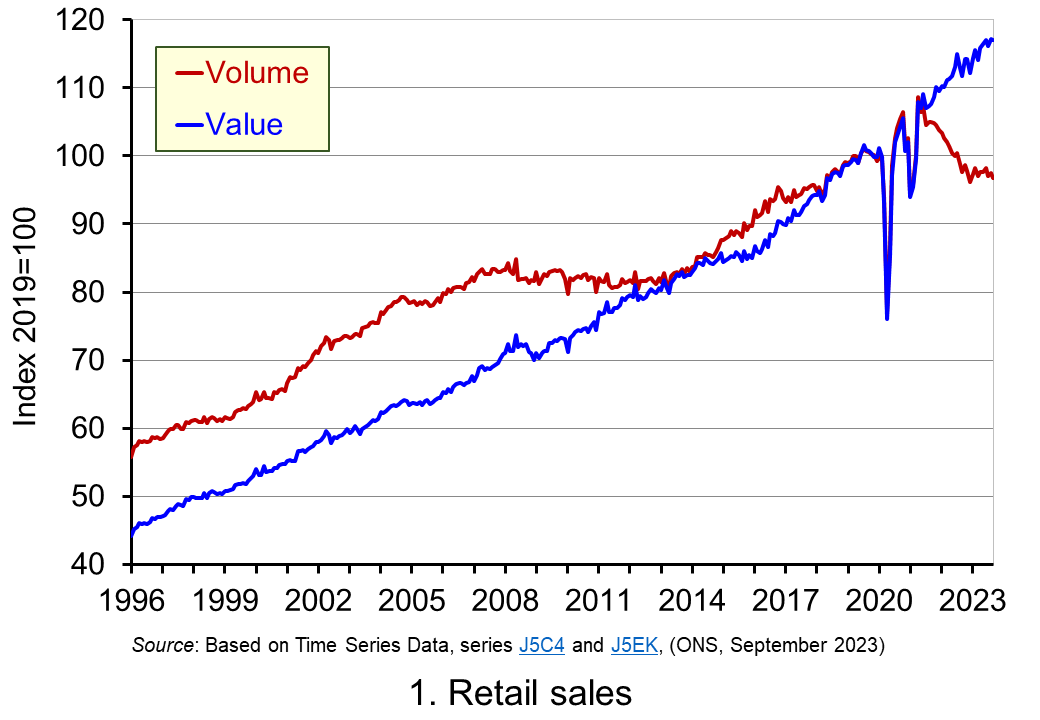 Chart 1 plots the value and volume of retail sales in Great Britain since 1996. (Click here for a PowerPoint of this and the other two charts). In value terms, retail sales spending increased by 165 per cent, whereas in volume terms, spending increased by 73 per cent. This difference is expected in the presence of rising prices, since nominal growth, as we have just noted, reflects both price and volume changes. The chart is notable for capturing two periods where the volume of retail spending ceased to grow. The first of these is following the global financial crisis of the late 2000s. The period from 2008 to 2013 saw the volume of retail sales stagnate and flatline with a recovery in volumes only really starting to take hold in 2014. Yet in nominal terms retail sales grew by around 16 per cent.
Chart 1 plots the value and volume of retail sales in Great Britain since 1996. (Click here for a PowerPoint of this and the other two charts). In value terms, retail sales spending increased by 165 per cent, whereas in volume terms, spending increased by 73 per cent. This difference is expected in the presence of rising prices, since nominal growth, as we have just noted, reflects both price and volume changes. The chart is notable for capturing two periods where the volume of retail spending ceased to grow. The first of these is following the global financial crisis of the late 2000s. The period from 2008 to 2013 saw the volume of retail sales stagnate and flatline with a recovery in volumes only really starting to take hold in 2014. Yet in nominal terms retail sales grew by around 16 per cent.
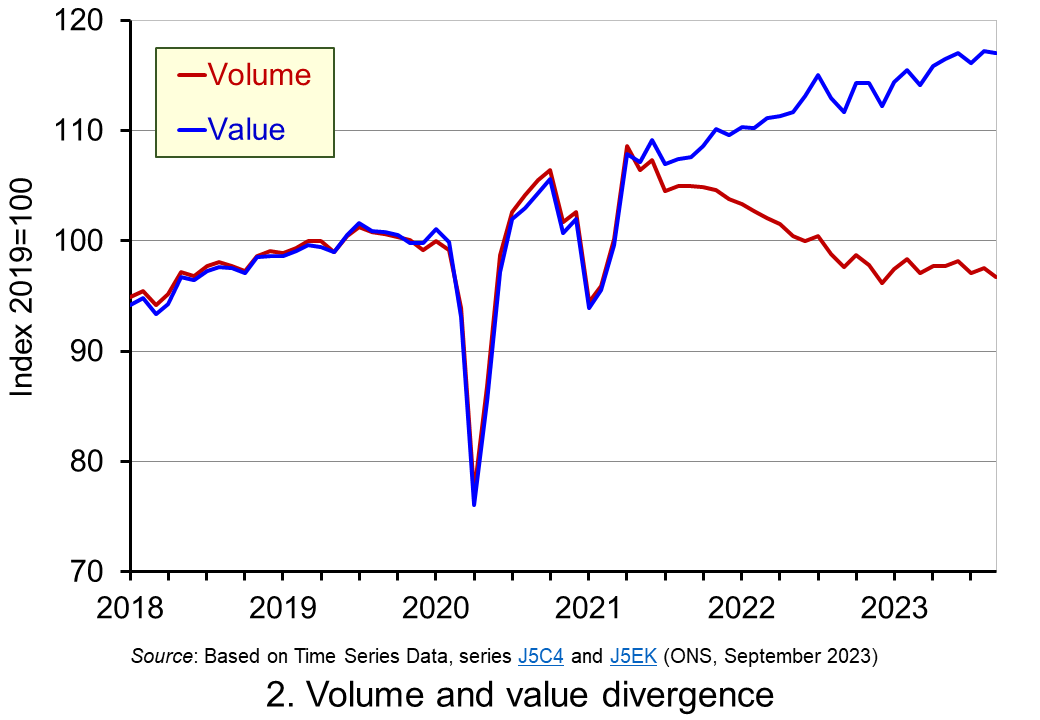 The second of the two periods is the decline in the volume of retail sales from 2021. To help illustrate this more clearly, Chart 2 zooms in on retail sales over the past five years or so. We can see a significant divergence between the volume and value of retail sales. Between April 2021 and September 2023, the volume of retail sales fell by 11%. In contrast, the value of retail sales increased by 8.4%. The impact of the inflationary shock and the consequent cost-of-living crisis that emerged from 2021 is therefore demonstrated starkly by the chart, not least the severe drag that it has had on the volume of retail spending. This has meant that the aggregate volume of retail sales in September 2023 was only back to the levels of mid-2018.
The second of the two periods is the decline in the volume of retail sales from 2021. To help illustrate this more clearly, Chart 2 zooms in on retail sales over the past five years or so. We can see a significant divergence between the volume and value of retail sales. Between April 2021 and September 2023, the volume of retail sales fell by 11%. In contrast, the value of retail sales increased by 8.4%. The impact of the inflationary shock and the consequent cost-of-living crisis that emerged from 2021 is therefore demonstrated starkly by the chart, not least the severe drag that it has had on the volume of retail spending. This has meant that the aggregate volume of retail sales in September 2023 was only back to the levels of mid-2018.
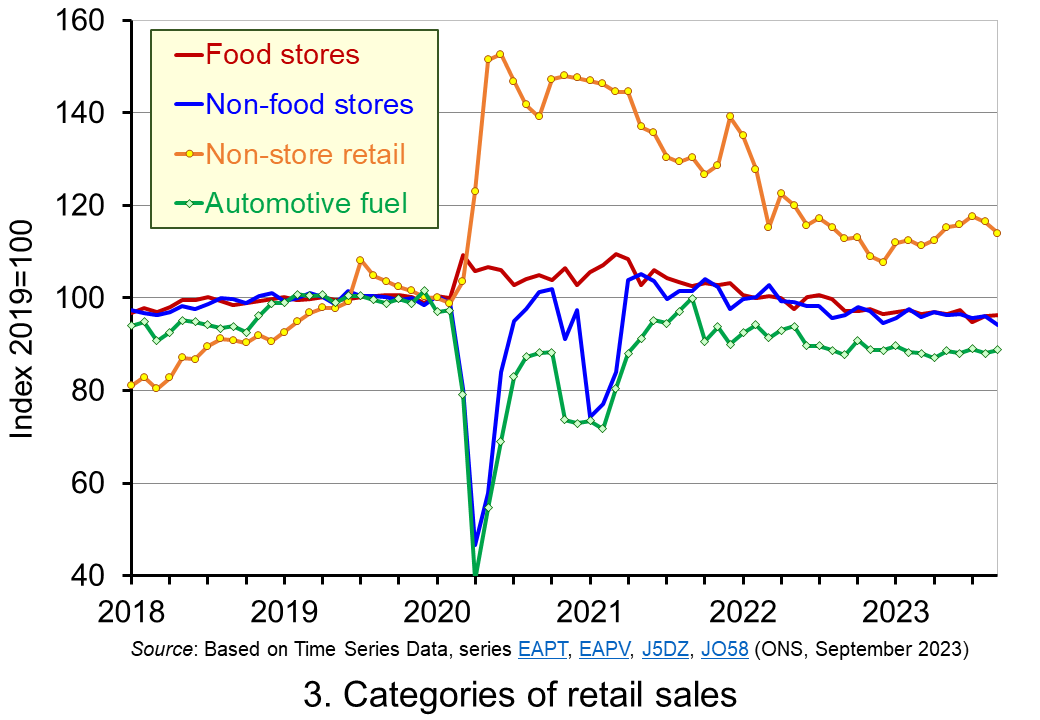 Finally, Chart 3 shows the patterns in the volumes of retailing by four categories since 2018: specifically, food stores, predominantly non-food stores, non-store retail, and automotive fuel. The largest fall in the volume of retail sales has been experienced by non-store retailing – largely online retailing. From its peak in December 2020, non-store retail sales decreased by almost 20 per cent up to September 2023. While this needs to be set in the context of the volume of non-store retail purchases being 14% higher than in February 2020 before the pandemic lockdowns were introduced, it is nonetheless indicative of the pressures facing online retailers.
Finally, Chart 3 shows the patterns in the volumes of retailing by four categories since 2018: specifically, food stores, predominantly non-food stores, non-store retail, and automotive fuel. The largest fall in the volume of retail sales has been experienced by non-store retailing – largely online retailing. From its peak in December 2020, non-store retail sales decreased by almost 20 per cent up to September 2023. While this needs to be set in the context of the volume of non-store retail purchases being 14% higher than in February 2020 before the pandemic lockdowns were introduced, it is nonetheless indicative of the pressures facing online retailers.
Importantly, the final chart shows that the pressures in retailing are widespread. Spending volumes on automotive fuels, and in food and non-food stores are all below 2019 levels. The likelihood is that these pressures will persist for some time to come. This inevitably has potential implications for retailers and, of course, for those that work in the sector.
Articles
Statistical bulletin
Data
Questions
- Why does an increase in the value of retail sales not necessarily mean that their volume has increased?
- In the presence of deflation, which will be higher: nominal or real growth rates?
- Discuss the factors that could explain the patterns in the volume of spending observed in the different categories of retail sales in Chart 3.
- Discuss what types of retail products might be more or less sensitive to the macroeconomic environment.
- Conduct a survey of recent media reports to prepare a briefing discussing examples of retailers who have struggled or thrived in the recent economic environment.
- What do you understand by the concepts of ‘consumer confidence’ and ‘economic uncertainty’? How might these affect the volume of retail spending?
- Discuss the proposition that the retail sales data cast doubt on whether people are ‘forward-looking consumption smoothers’.
 Have you ever wondered how your job affects your happiness? We all know that not all jobs are created equal. Some are awesome, while others … not so much. Well, it turns out that employment status and the type of work you do can have a big impact on how you feel – especially in developing countries where labour markets are usually tighter and switching between jobs can be more difficult.
Have you ever wondered how your job affects your happiness? We all know that not all jobs are created equal. Some are awesome, while others … not so much. Well, it turns out that employment status and the type of work you do can have a big impact on how you feel – especially in developing countries where labour markets are usually tighter and switching between jobs can be more difficult.
A recent study by Carmichael, Darko and Vasilakos (2021) uses survey data from Ethiopia, Peru, India and Vietnam to answer this very question. The study found that the quality of work is a big deal when it comes to how young people feel. Not all jobs are ‘good jobs’ that automatically make you feel great. Although your wellbeing is likely to be higher when you’re in employment than when you’re not, there are certain job attributes that can push that ‘employment premium’ up or down. This is especially important to understand in countries like many in sub-Saharan Africa, where there aren’t many formal jobs, and people often end up overqualified for what they do.
What job attributes lead to higher wellbeing?
 What then are the job attributes that are correlated with higher levels of wellbeing? The first is money: Okay, we know money can’t buy happiness, but it can certainly make life easier. We were therefore hardly surprised to find a positive and statistically significant association between hourly earnings and wellbeing.
What then are the job attributes that are correlated with higher levels of wellbeing? The first is money: Okay, we know money can’t buy happiness, but it can certainly make life easier. We were therefore hardly surprised to find a positive and statistically significant association between hourly earnings and wellbeing.
We were also not surprised to find that a ‘poor working environment’ has a strong and highly significant negative effect on wellbeing.
Finally, feeling proud of your work is also found to be a strongly significant determinant of your wellbeing. After all, people tend to excel in things they like doing, which is probably part of the ‘transmission mechanism’ between ‘work pride’ and ‘subjective wellbeing’.
 Which one of these attributes did you think had the greatest effect on wellbeing? Let me guess, many of you will say ‘earnings’. But then you would be wrong. Earnings were indeed positively associated with wellbeing and statistically significant at just about the 10% level, whereas work pride was very strongly statistically significant at the 1% level and had an effect on wellbeing that was four times greater than hourly earnings.
Which one of these attributes did you think had the greatest effect on wellbeing? Let me guess, many of you will say ‘earnings’. But then you would be wrong. Earnings were indeed positively associated with wellbeing and statistically significant at just about the 10% level, whereas work pride was very strongly statistically significant at the 1% level and had an effect on wellbeing that was four times greater than hourly earnings.
Putting yourself in a poor working environment on the other hand would reduce your wellbeing by almost twice as much as the earnings coefficient.
Policy implications
What does all this mean for policy-makers? If we want to make life better for young people in low-income countries, we need to tackle the problems from multiple angles.
 First, young people need to be helped to get the skills they need for the job market. This can be done through things like training programmes and apprenticeships. However, not all of these programmes are created equal. Some have great results, and others not so much.
First, young people need to be helped to get the skills they need for the job market. This can be done through things like training programmes and apprenticeships. However, not all of these programmes are created equal. Some have great results, and others not so much.
But that’s not the whole story. In many countries, there’s a massive informal job market. It’s a place where people work but often don’t have the rights or protections that formal employees do. So, even if young people get trained, they might not find the ‘good’ jobs they’re hoping for.
Changes also need to be made on a much bigger scale. This often includes decentralising public investment to include rural areas, improving infrastructure, and encouraging private investment. Strengthening labour market rules and social protection can help too, by making sure that work is safe and fair.
In a nutshell, where you work and what kind of work you do can make a big difference to how you feel.
Conclusions
If policy-makers want to help young people in low-income countries, they need both to give them the skills they require and to create better job opportunities. But policy-makers also need to make bigger changes to the way things work, like boosting production and making sure jobs are safe and fair.
In the end, it’s about making life better for young people around the world. Let’s keep working on it!
Articles
- Well-being and employment of young people in Ethiopia, India, Peru and Vietnam: Is work enough?
Development Policy Review, Fiona Carmichael, Christian K. Darko and Nicholas Vasilakos (18/5/21)
- The search for ‘meaning’ at work
BBC Worklife, Kate Morgan (7/9/22)
- Job Satisfaction Is Rising: What’s Behind The Surprising Tend
Forbes, Tracy Brower (4/6/23)
- Young workers are embracing AI, job satisfaction rising: 2023 Young Generation in Tech report
Silicon Canals (4/10/23)
- ‘These jobs can be respectable too’: Why youths in China are abandoning white-collar jobs for ‘light labor’
CNBC, Goh Chiew Tong (6/6/23)
- Does Work Make You Happy? Evidence from the World Happiness Report
Harvard Business Review, Jan-Emmanuel De Neve and George Ward (20/3/17)
- Worker well-being is in demand as organizational culture shifts
American Psychological Association, Monitor on Psychology, Heather Stringer (1/1/23)
- Understanding children’s work and youth employment outcomes in Indonesia
Understanding Children’s Work (UCW) Programme, Villa Aldobrandini and V. Panisperna (June 2012)
- Where are We with Young People’s Wellbeing? Evidence from Nigerian Demographic and Health Surveys 2003–2013
Social Indicators Research, pp.803–33, Boniface Ayanbekongshie Ushie and Ekerette Emmanuel Udoh (November 2016)
- Employment Status and Well-Being Among Young Individuals. Why Do We Observe Cross-Country Differences?
Social Indicators Research, Dominik Buttler (29/6/22)
- Employment Mismatches Drive Expectational Earnings Errors among Mozambican Graduates
The World Bank Economic Review, Sam Jones, Ricardo Santos and Gimelgo Xirinda (27/7/23)
- Youth Employment and Skills Development in The Gambia
World Bank Working Paper 217, Nathalie Lahire, Richard Johanson and Ryoko Tomita Wilcox (2011)
Questions
- How does the quality of work impact the happiness and wellbeing of young people in low- and middle-income countries (LMICs), and why is this significant in the context of job opportunities in sub-Saharan Africa?
- What are some potential solutions and strategies discussed in the article for improving the wellbeing of young people in LMICs, particularly in the context of employment and job opportunities?
- Have you ever experienced a job that significantly (positively or negatively) impacted your wellbeing or happiness? Reflect on your experience and how it influenced your overall life satisfaction?
- How is AI likely to affect the wellbeing of young professional workers?
- How is the pandemic likely to have affected job satisfaction?
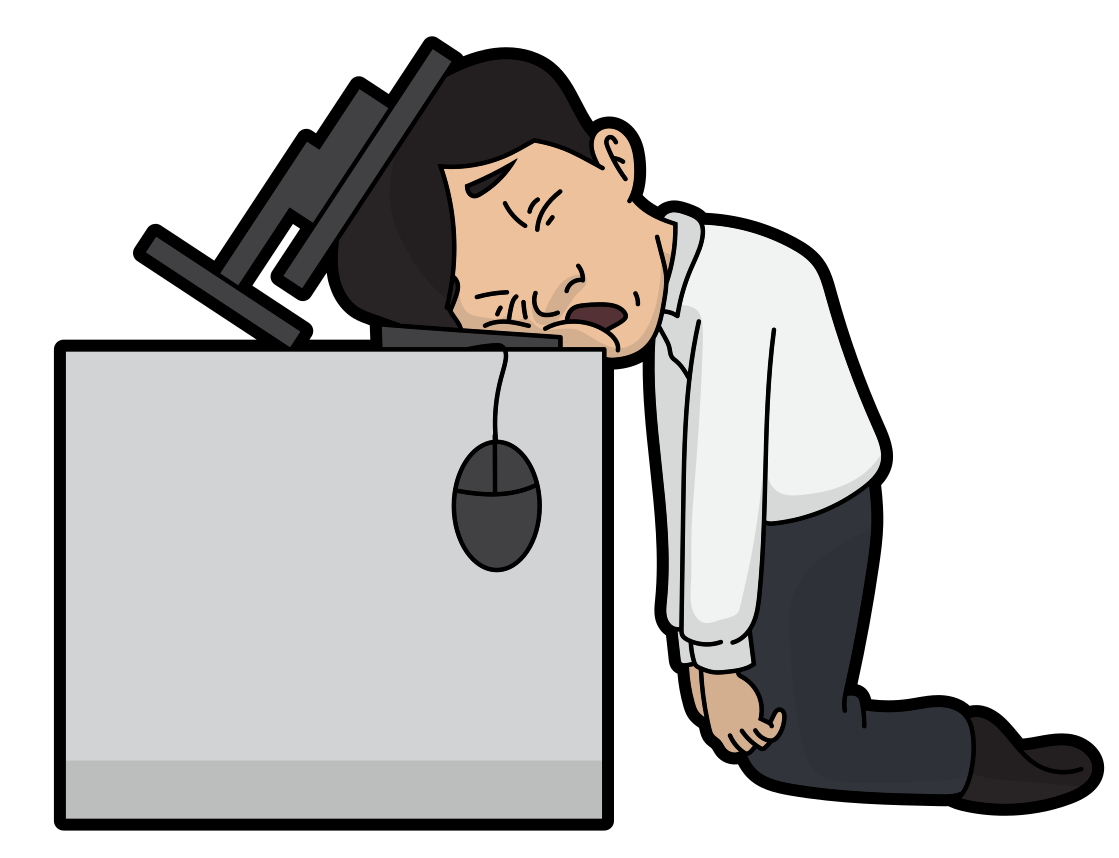 You’ve had a busy day at work. You check your watch; it’s almost 5pm. You should be packing soon – except, your boss is still in their office. You shouldn’t really be seen leaving before your boss, should you? You don’t want to be branded as ‘that guy’ – the one who is ‘not committed’, ‘not willing to go the extra mile’, ‘not flexible enough’, first out of the door’ – you don’t want to have that label pinned on your performance appraisal. After all, your boss is still hard at work, and so are your other colleagues.
You’ve had a busy day at work. You check your watch; it’s almost 5pm. You should be packing soon – except, your boss is still in their office. You shouldn’t really be seen leaving before your boss, should you? You don’t want to be branded as ‘that guy’ – the one who is ‘not committed’, ‘not willing to go the extra mile’, ‘not flexible enough’, first out of the door’ – you don’t want to have that label pinned on your performance appraisal. After all, your boss is still hard at work, and so are your other colleagues.
So you wait, pretending to work, although you do not really do much – perhaps you’re checking Facebook, reading the news or similar. And so does your boss, not wanting to be seen leaving before anyone else. But what example is this going to set for you and your other colleagues. You all wait for someone to make the first move – a prisoner’s dilemma situation. The only difference is that it’s you who is the prisoner in this situation.
Presenteeism
What we have described is an example of presenteeism. But how would we define it? If you search the term on Google Scholar or Scopus, you will come across a number of articles in the fields of health and labour economics that define presenteeism as a phenomenon in which employees who feel physically unwell choose to go to work, or stay on at work, rather than asking for time off to get better (see, for instance, Hansen and Andersen, 2008 and several others). This is also known as sickness presenteeism.
According to Cooper and Lu (2016), however, the use of the term can be extended to describe a wider situation in which a worker is physically present at their workplace but not functioning (by reason of tiredness, physical illness, mental ill-health, peer pressure or whatever else). As explained in Biron and Saksvik (2009):
Cooper’s conceptualisation of presenteeism implied that presenteeism was a behaviour determined by specific determinants (i.e. long working hours and a context of uncertainty). This tendency to stay at work longer than required to display a visible commitment is what Simpson (1998) calls ‘competitive presenteeism’ where people compete on who will stay in the office the longest.
The effect of presenteeism
 Unsurprisingly, the effect of presenteeism on the wellbeing of workers and the economic performance of firms has been looked at extensively from different angles and disciplines – including health economists, organisational behaviour and labour economists – for a recent and comprehensive review of the literature on this topic see Lohaus and Habermann (2019).
Unsurprisingly, the effect of presenteeism on the wellbeing of workers and the economic performance of firms has been looked at extensively from different angles and disciplines – including health economists, organisational behaviour and labour economists – for a recent and comprehensive review of the literature on this topic see Lohaus and Habermann (2019).
Most of these studies agree that the effects of presenteeism are negative; in particular, they identify significant negative effects on the physical health of workers (Skagen and Collins, 2016); emotional exhaustion and mental health issues (Demerouti et al, 2009); persistent productivity loss (Warren et al, 2011); lower work engagement and negative feelings (Asfaw et al, 2017) – among several others. There seems, therefore, to be plenty of convincing evidence that presenteeism is bad for everyone – business owners, managers and staff.
 So next time that you find yourself stuck at work working silly hours, feeling totally unproductive and just staying to be seen, email this blog to your boss and other colleagues – and ask them if they wish to join you for a drink or a walk.
So next time that you find yourself stuck at work working silly hours, feeling totally unproductive and just staying to be seen, email this blog to your boss and other colleagues – and ask them if they wish to join you for a drink or a walk.
You’re welcome!
(By the way, there’s a saying that in the UK the last one to leave the office is seen as the hardest working, whereas in Germany the last one to leave the office is seen as the least efficient!)
Articles
- The problem with presenteeism
Personnel Today, Nerys Williams (5/12/13)
- Presenteeism and Why You Should Care
Linkedin, Jeffrey Smagacz (25/9/23)
- When so much at work has changed, why can’t we shake presenteeism?
BBC News, Josie Cox (24/7/23)
- What is presenteeism? Counting the cost of presenteeism in the workplace
Enhesa, Lauren Payne (4/10/23)
- Presenteeism at Work
Health Assured (20/1/20 – since updated)
- Turning the tide on presenteeism: how employers can combat the growing problem
The HR Director Magazine, David Bourne (22/5/19)
 Do I really have to be here? The curse of workplace presenteeism
Do I really have to be here? The curse of workplace presenteeismRTE, Kevin Murphy (29/5/19)
- Working when sick is rising and harms you and your employer. This is why
World Economic Forum Agenda, Douglas Broom (2/5/20)
- Majority of absence and presenteeism could be addressed by ‘targeted’ employer support
Occupational health & wellbeing: Personnel Today, Ashleigh Webber (15/4/19)
- How To Break The Chains Of Presenteeism
Forbes, Jack Kelly (25/7/23)
- Eradicating Presenteeism, Absenteeism, and Leavism in the Workplace
SpiceWorks, Jonathan Munnery (7/6/23)
References
- Going ill to work–what personal circumstances, attitudes and work-related factors are associated with sickness presenteeism?
Social science & medicine, Vol 67(6), pp.956–64, Claus D Hansen and Johan Hviid Andersen (June 2008)
- Presenteeism as a global phenomenon
Cross Cultural & Strategic Management, Vol 23(2) pp.216–31, Cary L Cooper and Luo Lu (April 2016)
- Sickness presenteeism and attendance pressure factors: Implications for practice
International handbook of work and health psychology, Chapter 5, Caroline Biron and Per Øystein Saksvik (11/12/09)
- Presenteeism, Power and Organizational Change: Long Hours as a Career Barrier and the Impact on the Working Lives of Women Managers
British Journal of Management, Vol 9(1) pp.37–50, Ruth Simpson (September 1998)
- Presenteeism: A review and research directions
Human Resource Management Review, Vol 29(1), pp.43–58, Daniela Lohaus and Wolfgang Habermann (March 2019)
- The consequences of sickness presenteeism on health and wellbeing over time: A systematic review
Social Science & Medicine, Vol 161, pp.169–77, Kristian Skagen and Alison M.Collins (July 2016)
- Present but sick: a three‐wave study on job demands, presenteeism and burnout
Career Development International, Vol 14(1), pp.50–68, Evangelia Demerouti, Pascale M Le Blanc, Arnold B Bakker, Wilmar B Schaufeli and Joop Hox (2009)
- Cost burden of the presenteeism health outcome: Diverse workforce of nurses and pharmacists
Journal of Occupational and Environmental Medicine, Vol 53(1), pp.90–9, Carol L Warren, Shelley White-Means, Mona Wicks, Cyril F Chang, Dick Gourley and Muriel Rice (January 2011)
- Potential Economic Benefits of Paid Sick Leave in Reducing Absenteeism Related to the Spread of Influenza-Like Illness
Journal of occupational and environmental medicine Vol 59(9), pp.822–9, Abay Asfaw, Roger Rosa and Regina Pana-Cryan (September 2017)
Questions
- ‘Presenteeism leads to lower productivity and firm performance and should be discouraged by business owners and managers’. Discuss.
- Jack Ma, the Chinese billionaire and owner of Ali Baba, has defended his ‘996 work model’ (working 9am to 9pm for 6 days a week) as a ‘huge blessing’. Find and review some articles on this topic, and use them to write a response. Your response should be substantiated using relevant economic theory and empirical research.
- Have you or anyone you know found yourself guilty of presenteeism? Share your experience with the rest of the class, focusing on effects on productivity and your attitude towards your employer and work colleagues.
 Policy makers have become increasingly concerned about what the US Federal Trade Commission (FTC) describe as ‘negative option marketing’. These are marketing deals that contain the following feature:
Policy makers have become increasingly concerned about what the US Federal Trade Commission (FTC) describe as ‘negative option marketing’. These are marketing deals that contain the following feature:
a term or condition that allows a seller to interpret a customer’s silence, or failure to take affirmative action, as an acceptance of an offer.
For example, companies such as Amazon, Apple, Spotify and Netflix may offer students a 3-month free trial or 3-month introductory offer (at a special lower price) for movie and music streaming services. However, many of these subscription contracts contain an example of negative option marketing – auto renewal clauses.
Problems with auto-renewal contracts
The inclusion of an auto-renewal clause means that if a customer fails to cancel the subscription at the end of the three-month period, the subscription automatically reverts to its full price. The full-price contract then continues to roll-over indefinitely unless the customer takes a pre-specified action to terminate the deal. Inattentive consumers could end up paying subscription prices that far exceed their willingness to pay.
 Auto-renewal contracts are not just an issue with free trials/introductory offers. Some people may purchase subscription contracts at the full price and then forget about them. These consumers could end up paying fees for months after they have effectively stopped using the service.
Auto-renewal contracts are not just an issue with free trials/introductory offers. Some people may purchase subscription contracts at the full price and then forget about them. These consumers could end up paying fees for months after they have effectively stopped using the service.
Another potential problem with the use of auto-renewal contracts, is businesses deliberately making the cancellation process more complex than it needs to be. In many cases it takes just one click to sign up for the subscription, but multiple clicks through a series of menus to cancel. Some businesses do not provide consumers with the option to cancel online and, instead, they are forced to phone a number that is often very busy.
Effects on consumer welfare
To what extent do these problems caused by auto-renewal reduce consumer welfare? What evidence do we have?
 Research by Citizens Advice found that just over one in four people (26 per cent) had signed up to a subscription by accident. 58 per cent of this group forgot to cancel a free trial, while 21 per cent did not realise that the free trial would automatically roll-over to a full-price subscription. This seems to be a particular issue for those on low incomes with 46 per cent of people on Universal Credit signing up to a subscription by accident.
Research by Citizens Advice found that just over one in four people (26 per cent) had signed up to a subscription by accident. 58 per cent of this group forgot to cancel a free trial, while 21 per cent did not realise that the free trial would automatically roll-over to a full-price subscription. This seems to be a particular issue for those on low incomes with 46 per cent of people on Universal Credit signing up to a subscription by accident.
Analysis by the Department for Business and Trade (DBT) has tried to estimate the value of these unwanted subscriptions. The study found that consumers spent £602 million on unwanted subscriptions where a free or reduced-price trial had been rolled over to the full price. The same study also found that £573 million was spent on subscriptions that people had forgotten about.
One in five people in the Citizens Advice study who tried to cancel a subscription found the process difficult. The DBT estimates that cancellation difficulties led to £382 million being spent on unwanted subscriptions.
UK Government response
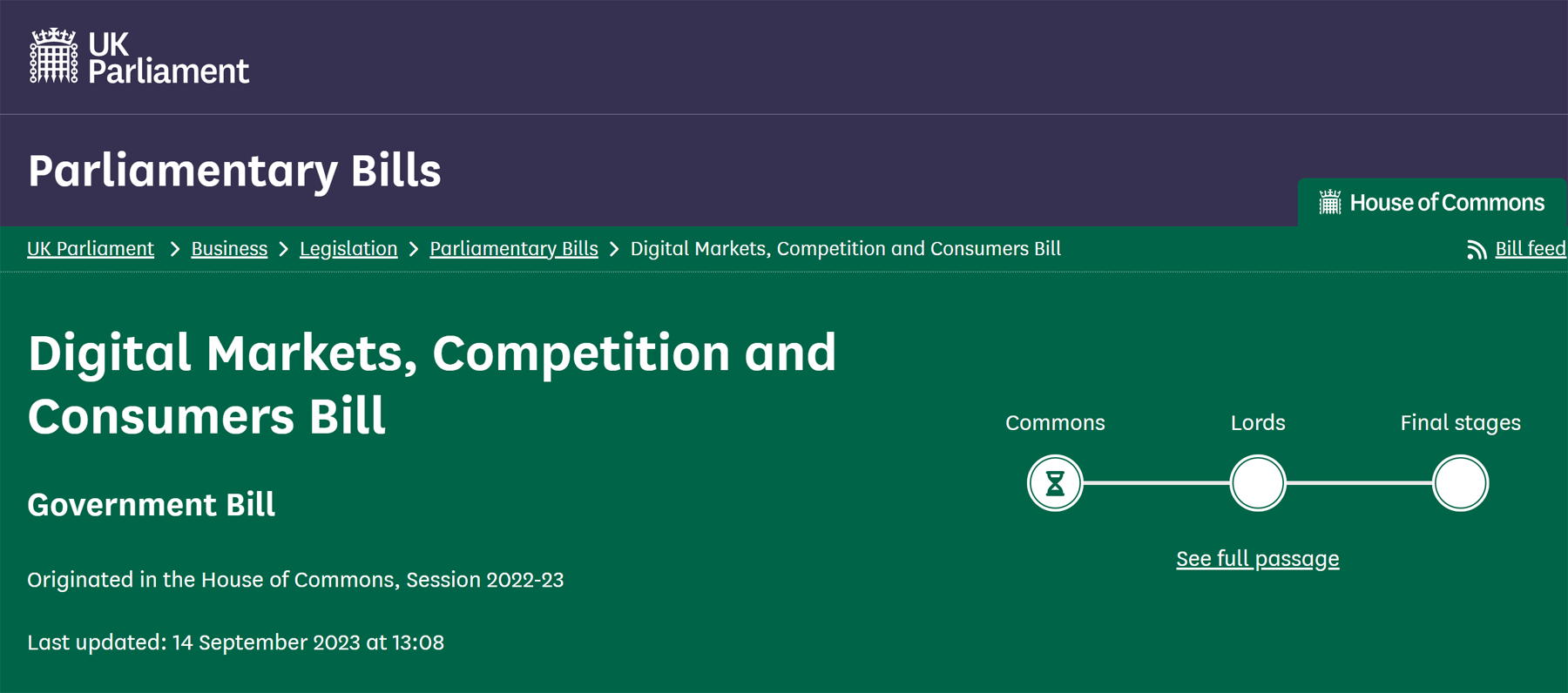 In response to these findings, the government introduced the Digital Markets, Competition and Consumers Bill into Parliament in April 2023.
In response to these findings, the government introduced the Digital Markets, Competition and Consumers Bill into Parliament in April 2023.
Provisions in the Bill seek to standardise the information that businesses must provide consumers before they sign up for subscription contracts. For example, in the future, firms will have to display prominently (a) any auto-renewal provisions, (b) whether the price increases after a specified period, (c) details about how consumers can terminate the contract and (d) cooling-off periods.
The Bill also stipulates that businesses will have to provide consumers with reminders when a free/reduced-price trial period is about to end and/or a subscription is about to renew automatically. They must also make it easy to exit contracts and remove any unnecessary steps.
The government initially considered an additional measure that would force businesses to provide consumers with the option to take out any subscription without auto-renewal.
Citizens Advice strongly supported this policy. They argued that not only should consumers be given the choice, but that auto-renewal should not be the default i.e. people would have to opt-in to auto-renewal subscriptions.
However, after the consultation process for the Bill, the government decided against introducing this additional measure. Businesses have also argued that the other elements of the policy are too prescriptive.
Articles
Government documents
Questions
- Outline some theories from behavioural economics that might help to explain why people sometimes end up with unwanted subscriptions.
- Discuss some of the potential benefits of auto-renewal subscriptions for both consumers and firms.
- Using behavioural economic theory, explain some of the potential disadvantages for businesses of using auto-renewal subscriptions.
- When businesses deliberately make the cancellation process more complex than it needs to be, it is referred to as an example of ‘sludge’. Explain the meaning of ‘sludge’ in more detail, referring to some different examples in your answer.
- What difference do you think it would make to the number of people signing up for auto-renewal subscriptions if you had to opt-in as opposed to opting out? Explain your answer.
- Another policy would be to force firms to cancel subscription contracts if there is evidence that consumers have not used the service for a long period of time. Discuss some of the advantages and disadvantages of this measure.
- Explain what are meant by ‘dark patterns’. How may the choice architecture on some sites actually hinder consumer choice?
 We have examined inflation in several blogs in recent months. With inflation at levels not seen for 40 years, this is hardly surprising. One question we’ve examined is whether the policy response has been correct. For example, in July, we asked whether the Bank of England had raised interest rates too much, too late. In judging policy, one useful distinction is between demand-pull inflation and cost-push inflation. Do they require the same policy response? Is raising interest rates to get inflation down to the target rate equally applicable to inflation caused by excessive demand and inflation caused by rising costs, where those rising costs are not caused by rising demand?
We have examined inflation in several blogs in recent months. With inflation at levels not seen for 40 years, this is hardly surprising. One question we’ve examined is whether the policy response has been correct. For example, in July, we asked whether the Bank of England had raised interest rates too much, too late. In judging policy, one useful distinction is between demand-pull inflation and cost-push inflation. Do they require the same policy response? Is raising interest rates to get inflation down to the target rate equally applicable to inflation caused by excessive demand and inflation caused by rising costs, where those rising costs are not caused by rising demand?
 Central banks are generally charged with keeping inflation in the medium term at a target rate set by the government or the central bank itself. For most developed countries, this is 2% (see table in the blog, Should central bank targets be changed?). So is raising interest rates the correct policy response to cost-push inflation?
Central banks are generally charged with keeping inflation in the medium term at a target rate set by the government or the central bank itself. For most developed countries, this is 2% (see table in the blog, Should central bank targets be changed?). So is raising interest rates the correct policy response to cost-push inflation? Another argument for raising interest rates in the face of cost-push inflation is when those cost increases are felt more than in other countries. The USA has suffered less from cost pressures than the UK. On the other hand, its growth rate is higher, suggesting that its inflation, albeit lower than in the UK, is more of the demand-pull variety. Despite its inflation rate being lower than in the UK, the problem of excess demand has led the Fed to adopt an aggressive interest rate policy. Its target rate is 5.25% to 5.50%, while the Bank of England’s is 5.25%. In order to prevent short-term capital outflows and a resulting depreciation in the pound, further stoking inflation, the Bank of England has been under pressure to mirror interest rate rises in the USA, the eurozone and elsewhere.
Another argument for raising interest rates in the face of cost-push inflation is when those cost increases are felt more than in other countries. The USA has suffered less from cost pressures than the UK. On the other hand, its growth rate is higher, suggesting that its inflation, albeit lower than in the UK, is more of the demand-pull variety. Despite its inflation rate being lower than in the UK, the problem of excess demand has led the Fed to adopt an aggressive interest rate policy. Its target rate is 5.25% to 5.50%, while the Bank of England’s is 5.25%. In order to prevent short-term capital outflows and a resulting depreciation in the pound, further stoking inflation, the Bank of England has been under pressure to mirror interest rate rises in the USA, the eurozone and elsewhere. Inflation: Not Dead Yet
Inflation: Not Dead Yet The distinction between nominal and real values in one of the ‘threshold concepts’ in economics. These are concepts that are fundamental to a discipline and which occur again and again. The distinction between nominal and real values is particularly important when interpreting and analysing data. We show its importance here when analysing the latest retail sales data from the Office for National Statistics.
The distinction between nominal and real values in one of the ‘threshold concepts’ in economics. These are concepts that are fundamental to a discipline and which occur again and again. The distinction between nominal and real values is particularly important when interpreting and analysing data. We show its importance here when analysing the latest retail sales data from the Office for National Statistics. Chart 1 plots the value and volume of retail sales in Great Britain since 1996. (Click
Chart 1 plots the value and volume of retail sales in Great Britain since 1996. (Click  The second of the two periods is the decline in the volume of retail sales from 2021. To help illustrate this more clearly, Chart 2 zooms in on retail sales over the past five years or so. We can see a significant divergence between the volume and value of retail sales. Between April 2021 and September 2023, the volume of retail sales fell by 11%. In contrast, the value of retail sales increased by 8.4%. The impact of the inflationary shock and the consequent cost-of-living crisis that emerged from 2021 is therefore demonstrated starkly by the chart, not least the severe drag that it has had on the volume of retail spending. This has meant that the aggregate volume of retail sales in September 2023 was only back to the levels of mid-2018.
The second of the two periods is the decline in the volume of retail sales from 2021. To help illustrate this more clearly, Chart 2 zooms in on retail sales over the past five years or so. We can see a significant divergence between the volume and value of retail sales. Between April 2021 and September 2023, the volume of retail sales fell by 11%. In contrast, the value of retail sales increased by 8.4%. The impact of the inflationary shock and the consequent cost-of-living crisis that emerged from 2021 is therefore demonstrated starkly by the chart, not least the severe drag that it has had on the volume of retail spending. This has meant that the aggregate volume of retail sales in September 2023 was only back to the levels of mid-2018. Finally, Chart 3 shows the patterns in the volumes of retailing by four categories since 2018: specifically, food stores, predominantly non-food stores, non-store retail, and automotive fuel. The largest fall in the volume of retail sales has been experienced by non-store retailing – largely online retailing. From its peak in December 2020, non-store retail sales decreased by almost 20 per cent up to September 2023. While this needs to be set in the context of the volume of non-store retail purchases being 14% higher than in February 2020 before the pandemic lockdowns were introduced, it is nonetheless indicative of the pressures facing online retailers.
Finally, Chart 3 shows the patterns in the volumes of retailing by four categories since 2018: specifically, food stores, predominantly non-food stores, non-store retail, and automotive fuel. The largest fall in the volume of retail sales has been experienced by non-store retailing – largely online retailing. From its peak in December 2020, non-store retail sales decreased by almost 20 per cent up to September 2023. While this needs to be set in the context of the volume of non-store retail purchases being 14% higher than in February 2020 before the pandemic lockdowns were introduced, it is nonetheless indicative of the pressures facing online retailers.  Have you ever wondered how your job affects your happiness? We all know that not all jobs are created equal. Some are awesome, while others … not so much. Well, it turns out that employment status and the type of work you do can have a big impact on how you feel – especially in developing countries where labour markets are usually tighter and switching between jobs can be more difficult.
Have you ever wondered how your job affects your happiness? We all know that not all jobs are created equal. Some are awesome, while others … not so much. Well, it turns out that employment status and the type of work you do can have a big impact on how you feel – especially in developing countries where labour markets are usually tighter and switching between jobs can be more difficult. What then are the job attributes that are correlated with higher levels of wellbeing? The first is money: Okay, we know money can’t buy happiness, but it can certainly make life easier. We were therefore hardly surprised to find a positive and statistically significant association between hourly earnings and wellbeing.
What then are the job attributes that are correlated with higher levels of wellbeing? The first is money: Okay, we know money can’t buy happiness, but it can certainly make life easier. We were therefore hardly surprised to find a positive and statistically significant association between hourly earnings and wellbeing. Which one of these attributes did you think had the greatest effect on wellbeing? Let me guess, many of you will say ‘earnings’. But then you would be wrong. Earnings were indeed positively associated with wellbeing and statistically significant at just about the 10% level, whereas work pride was very strongly statistically significant at the 1% level and had an effect on wellbeing that was four times greater than hourly earnings.
Which one of these attributes did you think had the greatest effect on wellbeing? Let me guess, many of you will say ‘earnings’. But then you would be wrong. Earnings were indeed positively associated with wellbeing and statistically significant at just about the 10% level, whereas work pride was very strongly statistically significant at the 1% level and had an effect on wellbeing that was four times greater than hourly earnings. First, young people need to be helped to get the skills they need for the job market. This can be done through things like training programmes and apprenticeships. However, not all of these programmes are created equal. Some have great results, and others not so much.
First, young people need to be helped to get the skills they need for the job market. This can be done through things like training programmes and apprenticeships. However, not all of these programmes are created equal. Some have great results, and others not so much. You’ve had a busy day at work. You check your watch; it’s almost 5pm. You should be packing soon – except, your boss is still in their office. You shouldn’t really be seen leaving before your boss, should you? You don’t want to be branded as ‘that guy’ – the one who is ‘not committed’, ‘not willing to go the extra mile’, ‘not flexible enough’, first out of the door’ – you don’t want to have that label pinned on your performance appraisal. After all, your boss is still hard at work, and so are your other colleagues.
You’ve had a busy day at work. You check your watch; it’s almost 5pm. You should be packing soon – except, your boss is still in their office. You shouldn’t really be seen leaving before your boss, should you? You don’t want to be branded as ‘that guy’ – the one who is ‘not committed’, ‘not willing to go the extra mile’, ‘not flexible enough’, first out of the door’ – you don’t want to have that label pinned on your performance appraisal. After all, your boss is still hard at work, and so are your other colleagues.  Unsurprisingly, the effect of presenteeism on the wellbeing of workers and the economic performance of firms has been looked at extensively from different angles and disciplines – including health economists, organisational behaviour and labour economists – for a recent and comprehensive review of the literature on this topic see Lohaus and Habermann (2019).
Unsurprisingly, the effect of presenteeism on the wellbeing of workers and the economic performance of firms has been looked at extensively from different angles and disciplines – including health economists, organisational behaviour and labour economists – for a recent and comprehensive review of the literature on this topic see Lohaus and Habermann (2019). So next time that you find yourself stuck at work working silly hours, feeling totally unproductive and just staying to be seen, email this blog to your boss and other colleagues – and ask them if they wish to join you for a drink or a walk.
So next time that you find yourself stuck at work working silly hours, feeling totally unproductive and just staying to be seen, email this blog to your boss and other colleagues – and ask them if they wish to join you for a drink or a walk.  Policy makers have become increasingly concerned about what the US Federal Trade Commission (FTC) describe as ‘negative option marketing’. These are marketing deals that contain the following feature:
Policy makers have become increasingly concerned about what the US Federal Trade Commission (FTC) describe as ‘negative option marketing’. These are marketing deals that contain the following feature: Auto-renewal contracts are not just an issue with free trials/introductory offers. Some people may purchase subscription contracts at the full price and then forget about them. These consumers could end up paying fees for months after they have effectively stopped using the service.
Auto-renewal contracts are not just an issue with free trials/introductory offers. Some people may purchase subscription contracts at the full price and then forget about them. These consumers could end up paying fees for months after they have effectively stopped using the service.  Research by Citizens Advice found that just over one in four people (26 per cent) had signed up to a subscription by accident. 58 per cent of this group forgot to cancel a free trial, while 21 per cent did not realise that the free trial would automatically roll-over to a full-price subscription. This seems to be a particular issue for those on low incomes with 46 per cent of people on Universal Credit signing up to a subscription by accident.
Research by Citizens Advice found that just over one in four people (26 per cent) had signed up to a subscription by accident. 58 per cent of this group forgot to cancel a free trial, while 21 per cent did not realise that the free trial would automatically roll-over to a full-price subscription. This seems to be a particular issue for those on low incomes with 46 per cent of people on Universal Credit signing up to a subscription by accident.  In response to these findings, the government introduced the Digital Markets, Competition and Consumers Bill into Parliament in April 2023.
In response to these findings, the government introduced the Digital Markets, Competition and Consumers Bill into Parliament in April 2023.